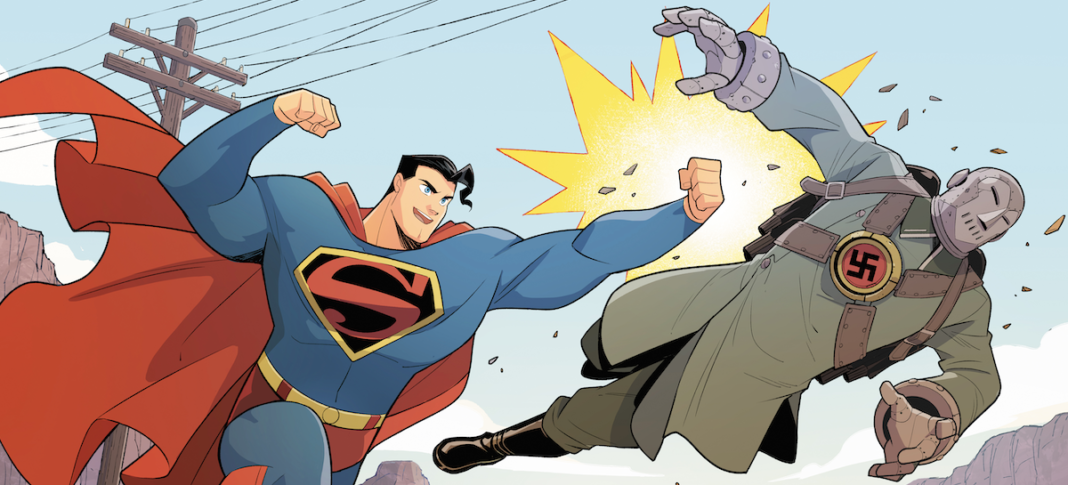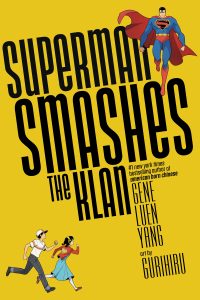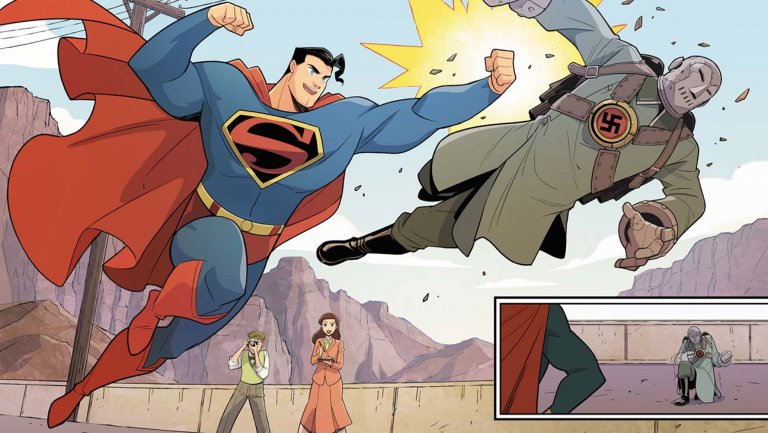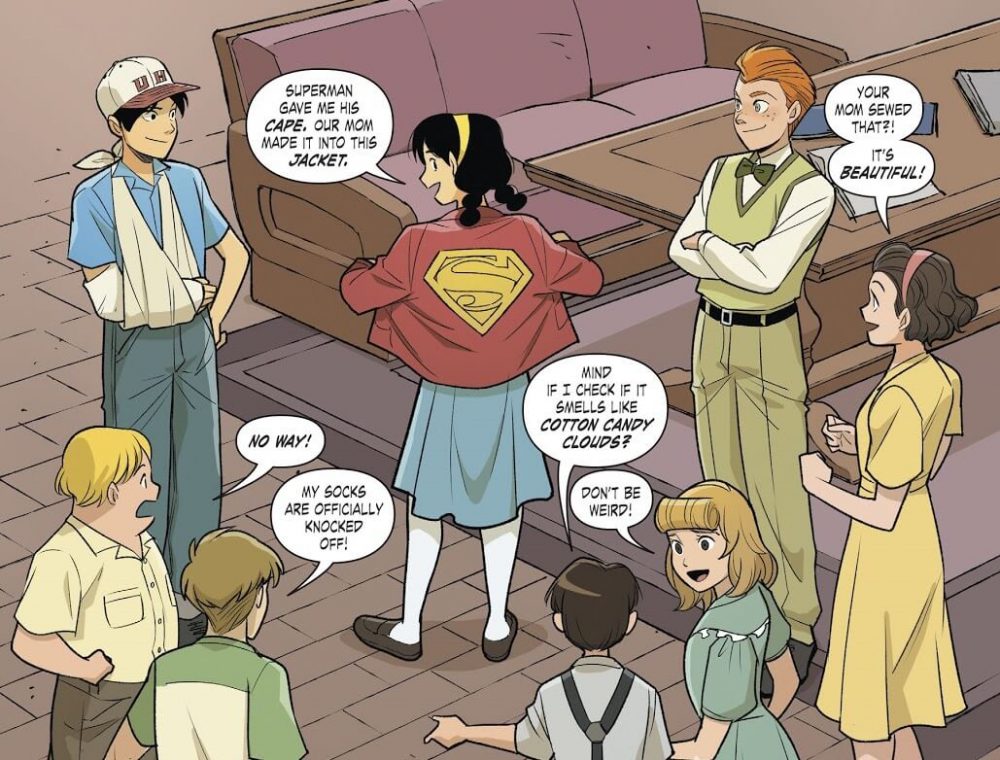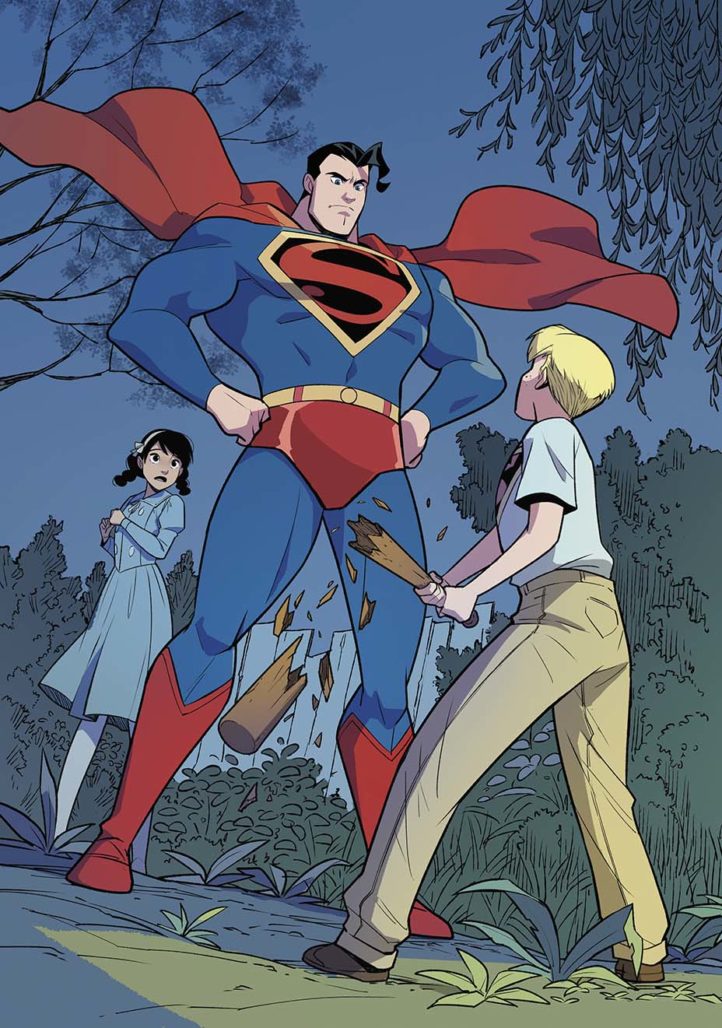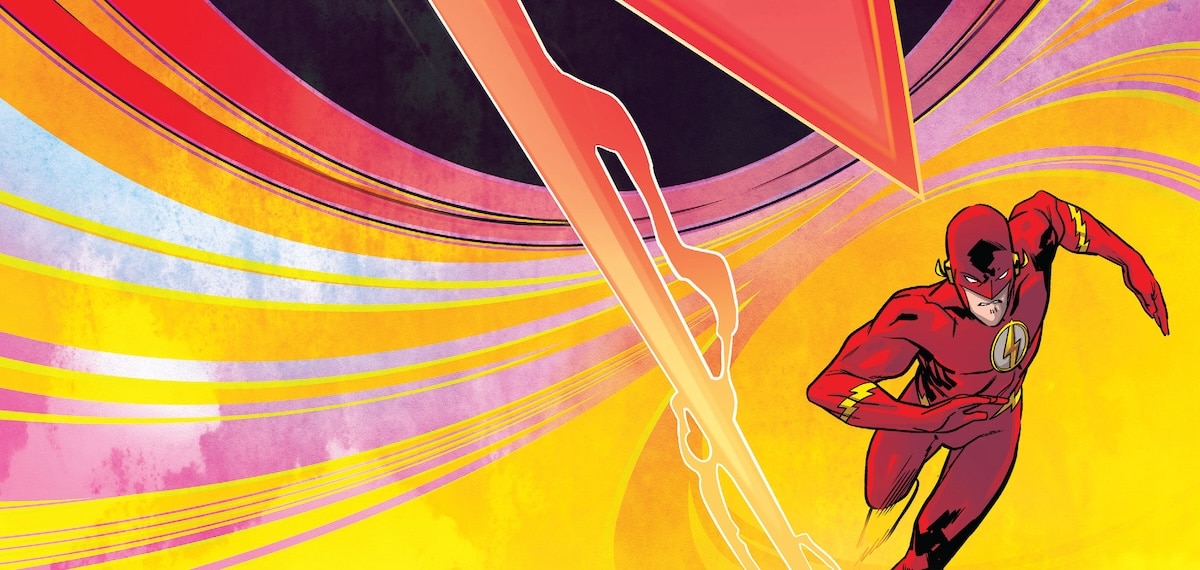THIS WEEK: With Superman Smashes the Klan now available as a collection, we look at the story’s place within the top-tier of Superman comics in recent years.
Superman Smashes the Klan
Writer: Gene Luen Yang
Artist: Gurihiru
Letterer: Janice Chiang
Superman Smashes the Klan is one of the best Superman comics I’ve ever read, right up there with Whatever Happened to the Man of Tomorrow and All-Star Superman. I give it my strongest possible recommendation.
Now collected as a graphic novel after initially being released in three installments, SSTK adapts “The Clan of the Fiery Cross,” a 1946 arc of the Superman radio show. It’s my favorite example of fiction’s power to change the real world for the better.
In the original story (which you can listen to here), the Man of Steel saves a Chinese-American family from an obvious stand-in for the Ku Klux Klan, while teaching their neighbors–and of course, the countless children who tuned in to hear Superman’s adventures each week–values like inclusivity, anti-racism, truth, justice, and the American way.
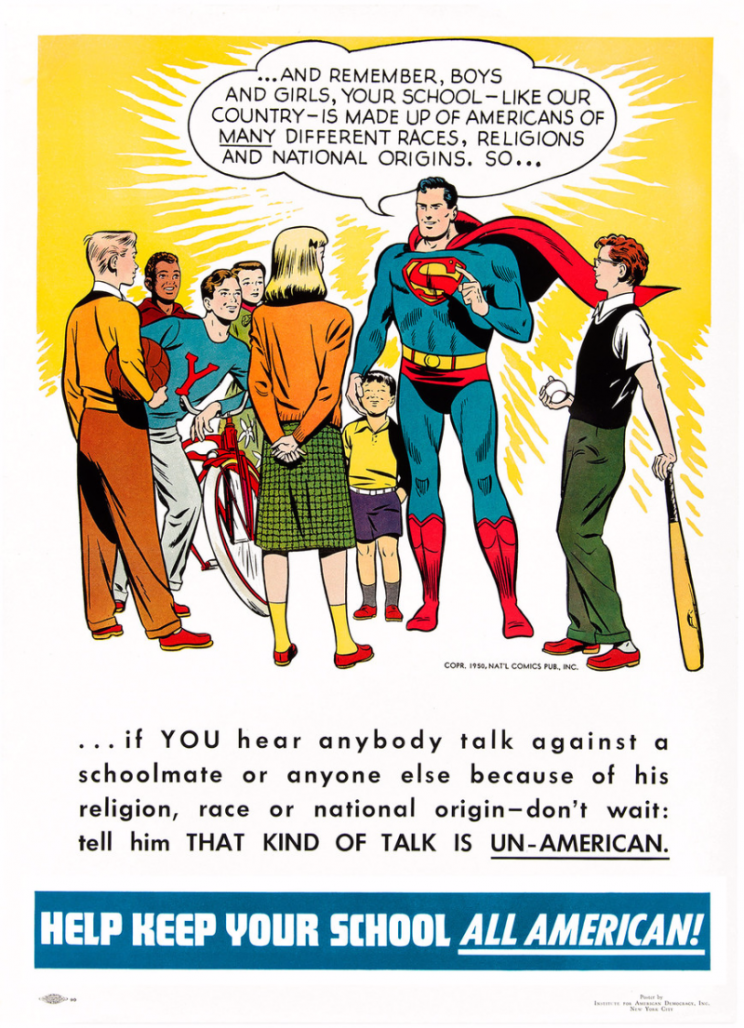
What happened behind the scenes was even more exciting. At the time, the Ku Klux Klan was growing at an alarming rate, even becoming somewhat mainstream. To fight back, a man named Stetson Kennedy infiltrated the KKK, wrote about his findings, and shared them with the writers of the hugely popular Superman radio program. Not only did they portray Klansmen as evil buffoons, but the story exposed secret information about the Klan, especially the fact that it was largely a money-making scheme for the top brass. Membership soon plummeted.
While the KKK itself may not have the power it once did, there’s no denying that bigotry still runs rampant in the United States and around the world. As you might surmise from the title, Superman Smashes the Klan isn’t particularly subtle about its anti-hate message. Much of why SSTK works so well is that it’s still a children’s story, so it’s not shy about telling kids, on no uncertain terms, that if they want to be like Superman (who doesn’t?) they need to reject bigotry. Yet it’s never overly preachy, with more to say than simply “racism is bad,” and much more than you’d think an all-ages comic, published by a subsidiary of AT&T, could get away with.
While it reads as modern enough for today’s kids to dive in without much historical background knowledge, SSTK is set firmly in 1946, just as The Clan of the Fiery Cross was when it aired that same year.
Once again, Roberta (who wasn’t named or given much of a role in the original story) and Tommy Lee are first-generation Chinese-American kids who move with their parents from Metropolis’ Chinatown to a predominantly white suburb of the city. When the Klan launches a violent intimidation campaign against the Lees, including burning a cross on their lawn and attempting to firebomb their house, Roberta and Tommy work together with the help of Jimmy Olsen, Los Lane, and Superman to unravel the secrets behind the hate group.
It’s as much an immigrant story as it is a fantastical tale of good vs evil. Roberta and Tommy are as much the protagonists as Superman, struggling to adjust to their move and make new friends in the face of both casual and deliberate racism.
Superman’s immigrant status, meanwhile, is refreshingly literalized. This is a young Superman, who hasn’t yet mastered all his powers. Throughout the book, he’s haunted by memories of childhood alienation and vague recollections of his alien birth parents, unable to fully unlock his abilities until he accepts his Kryptonian heritage.
It’s not subtle, but it is brilliantly nuanced. That SSTK proves smarter and more engaging than its already-compelling premise should come as little surprise to fans of Gene Luen Yang. His breakout graphic novel American Born Chinese explored the theme of reaching one’s full potential by embracing all facets of one’s identity, from the perspective of a young Chinese American.
Yang later took inspiration from his Chinese heritage to create Kong Kenan, the New Super-Man of China. While Kenan is Chinese, not Chinese-American, his comic is almost as radically compassionate as SSTK, with a similar emphasis on redemption through acts of kindness and courage.
Superman Smashes the Klan’s crisp and delightful visuals come courtesy of Japanese art team Gurihiru, having already drawn another one of the best superhero comics of the 21st century, The Unbelievable Gwenpool. Their clean-lined, cheerful style is perfectly suited for a kids’ book, and with the help of letterer Janice Chiang, it’s a breezy, inviting read despite the deadly serious themes. That’s not to say the subject matter isn’t taken seriously, but that it’s imbued with the relentless optimism that makes Superman such an enduring character.
I read all 240 pages of Superman Smashes the Klan in a single sitting, at which point I experienced a sense of awe similar to the one I had after my first viewing of Spider-Man: Into the Spider-Verse. It’s not just that SSTK is an exceptionally-crafted superhero story. It’s how thrilled I am by the thought of a generation of kids growing up with this comic and its deft handling of layered issues that so many adults still haven’t adequately grappled with. Naturally, I recommend it to adults as well. But more importantly, Superman Smashes the Klan might just change kids’ lives.
Miss any of our earlier reviews? Check out our full archive!


